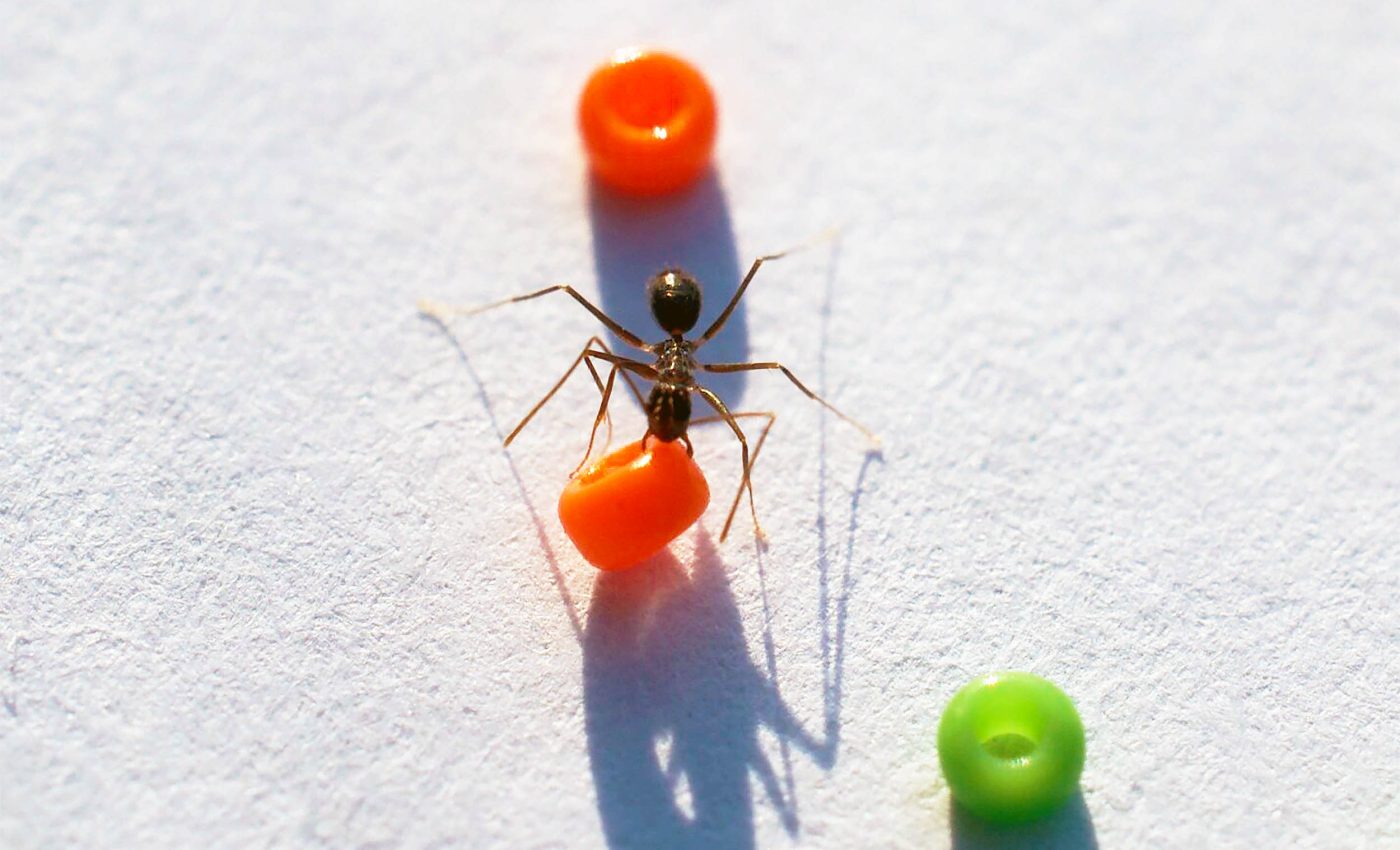
Swarm intelligence: Ants can anticipate obstacles and plan ahead
Among tens of thousands of ant species, many show complex behaviors like agriculture and tool use. Longhorn crazy ants add a new twist to that story. Their brains are minuscule, but they manage coordinated, goal-oriented actions.
A recent study shows that these ants can clear obstacles from a path before a food load even arrives. This action seems to require planning, yet it emerges without any ant holding a clear mental map.
Dr. Ehud Fonio, a scientist at the Weizmann Institute of Science, is the lead author of the study.
“Here we show for the first time that workers of the longhorn crazy ant can clear obstacles from a path before they become a problem – anticipating where a large food item will need to go and preparing the way in advance,” said Dr. Fonio.
“This is the first documented case of ants showing such forward-looking behavior during cooperative transport.”
Ants plan ahead for obstacles
The team made their discovery during fieldwork at the Weizmann Institute. Ants were seen removing pebbles before a food-carrying group arrived. This suggested some form of anticipation.
“When we first saw ants clearing small obstacles ahead of the moving load we were in awe. It appeared as if these tiny creatures understand the difficulties that lie ahead and try to help their friends in advance,” said Dr. Ofer Feinerman, co-author of the study.
This chance observation led to a large-scale experiment involving 83 trials. The team replaced pebbles with plastic beads and placed cat food as bait.
Ants cleared beads that blocked the path between food and nest, but only when the food was intact.
Crazy ants clear the way for big food
The ants cleared beads mainly when a single large pellet was present. With crumbs, they rarely cleared anything. This shows context sensitivity. Bead clearing happened only when it helped the group.
Ants transported the beads short distances, around 50 millimeters. They placed them away from the nest-food corridor. This effort reduced the food transport time by up to 15 times.
When large pellets were pinned down and could not be moved, ants still cleared obstacles. But they ignored beads completely when no food or only crumbs were present.
Ants respond to scent, not sight
The study’s most surprising finding was that ants began clearing without even seeing or touching the food. The trigger? Fresh pheromone markings left by recruiters.
Even without food, these chemical signals caused some ants to start clearing beads. Of 155 observed ant-bead interactions, 97.2 percent were preceded by a nearby scent mark.
Direct contact with food was not necessary. Just encountering a pheromone trail within a 20 mm radius of a bead triggered clearing. This suggests that the behavior is socially driven, not based on internal plans.
Collective intelligence of ant colonies
The experts discovered that crazy ants use a decentralized form of cognition. Instead of individual planning, their colony acts like a brain.
Each ant is a unit responding to chemical cues. Together, they clear obstacles as if they understand the goal.
“Taken together, these results imply that our initial impression was wrong: in reality, individual workers don’t understand the situation at all. This intelligent behavior happens at the level of the colony, not the individual,” explained study co-author Dr. Danielle Mersch.
“Each ant follows simple cues – like fresh scent marks left by others – without needing to understand the bigger picture, yet together they create a smart, goal-directed outcome.”
“We find this to be even more awe-inspiring than our initial guess,” said Feinerman.
Simple rules for complex behavior
Interestingly, some ants cleared multiple beads in sequence. One ant removed 64 beads. These “serial clearers” often focused on the same sector around the food, repeatedly working in the same direction.
Some switched sectors but returned to old ones. This pattern hints at possible short-term memory or chemical trail-following. Researchers suggest these ants could be following pheromone gradients repeatedly.

The research shows how complex behavior emerges from simple rules. It also highlights the power of external memory. Pheromone trails serve as shared information banks etched into the environment.
In this system, memory and action are collective. No single ant plans ahead. Yet their joint behavior gives the illusion of foresight. This mirrors how neurons form intelligent thought in the human brain.
Significance of ant intelligence
This work changes how we think about planning in nature. It shows that meaningful coordination does not require conscious intent.
In ants, intelligent-seeming food-related outcomes arise from distributed actions and shared cues. These findings deepen our understanding of swarm behavior.
The study also suggests new directions for robotics, where machines could collaborate without central control by using simple signals.
The study is published in the journal Frontiers in Behavioral Neuroscience.
—–
Like what you read? Subscribe to our newsletter for engaging articles, exclusive content, and the latest updates.
Check us out on EarthSnap, a free app brought to you by Eric Ralls and Earth.com.
—–














